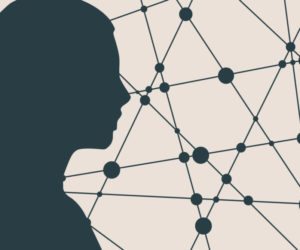Neurofeedback for Addiction Treatment: What is It?

Neurofeedback for addiction treatment helps to correct brain wave dysfunction to improve emotional functioning.
Neurofeedback for addiction treatment is a specialized form of biofeedback that helps to retrain abnormal brain wave patterns to change your psychological state. Neurofeedback is a research-based complementary therapy that can aid recovery when it’s used along with traditional therapies like cognitive-behavioral therapy. But what is neurofeedback, and what is biofeedback? This primer will explain.
Biofeedback Therapy for Alcoholism and Drug Addiction
Stress is a major factor in substance abuse, and it’s a powerful trigger for relapse. Learning to reduce your stress is an important focus in high-quality treatment programs. Biofeedback therapy helps you learn to control your body’s stress response through deep-breathing, visualization, and other exercises.
During biofeedback, your body’s functions are hooked up to a monitor, where you can see your blood pressure, heart rate, muscle tension, skin temperature, and other biological markers affected by stress. As you watch on the monitor, you engage in stress-reduction exercises to lower these responses. Biofeedback therapy for alcoholism and drug addiction increases your body awareness and teaches you how to reduce stress on the spot, an important skill for relapse prevention.
What is Neurofeedback?
Neurofeedback is a more passive form of biofeedback. During neurofeedback, your brain waves are fed into correcting software that detects faulty patterns and sends the brain a reset signal. The goal of neurofeedback for addiction treatment is to re-train your brain waves in order to achieve a more stable psychological state.
Brain Waves 101 and How Neurofeedback Helps
Your brain wave patterns are constantly changing, depending on your environment and emotional state.
- Gamma waves are the fastest of the brain waves and occur when you’re processing memories or learning a new task.
- Beta waves are the next fastest and are associated with a wide-awake state.
- Alpha waves are slower than beta waves and occur when you’re awake, but relaxed, such as just before you fall asleep or right after you wake up.
- Theta waves occur during light sleep or in an extremely relaxed state, such as under hypnosis.
- Delta waves are the slowest brain waves and are associated with deep, dreamless sleep.
If your brain waves aren’t functioning properly, a number of psychological problems may occur. If your beta activity is suppressed, or your alpha activity is increased, you may suffer from ADHD or depression. An overabundance of alpha waves can also lead to anxiety. Training your brain waves to operate properly through neurofeedback for addiction treatment can reduce negative emotional states as well as increase your energy and attentiveness. Improved emotional stability improves your chances of successful recovery, because negative emotional states increase cravings, reduce motivation, and cause stress, all of which are important relapse triggers.
What the Research Says About Neurofeedback for Addiction Treatment
While few studies directly address neurofeedback for treating addiction, a number of them show that neurofeedback is effective for treating many of the mental illnesses that co-occur with addiction. Getting symptoms of a mental illness under control is absolutely essential for successful recovery.
An article in Frontiers of Psychology cites research showing that neurofeedback is effective for treating insomnia, depression, anxiety, and addiction, among others. A literature review in Child and Adolescent Psychiatric Clinics of North America found that neurofeedback is a promising method for treating post-traumatic stress disorder, which often co-occurs with addiction.
Neurofeedback and Meditation
Interestingly, research shows that neurofeedback has the same benefits of meditation for many of the conditions it has been shown to improve. The fundamental principles of both meditation and neurofeedback are the same. According to researchers, the only real difference between meditation and neurofeedback is that meditation is self-regulated, while neurofeedback happens with the aid of a machine.
Neurofeedback can be an effective complementary treatment for addiction through a holistic rehab program. A holistic program that addresses mind, body, and spirit for whole-person healing offers the best outcomes of treatment, according to the Substance Abuse and Mental Health Services Administration.
If you or a loved one needs help with abuse and/or treatment, please call the WhiteSands Treatment at (877) 855-3470. Our addiction specialists can assess your recovery needs and help you get the addiction treatment that provides the best chance for your long-term recovery.
